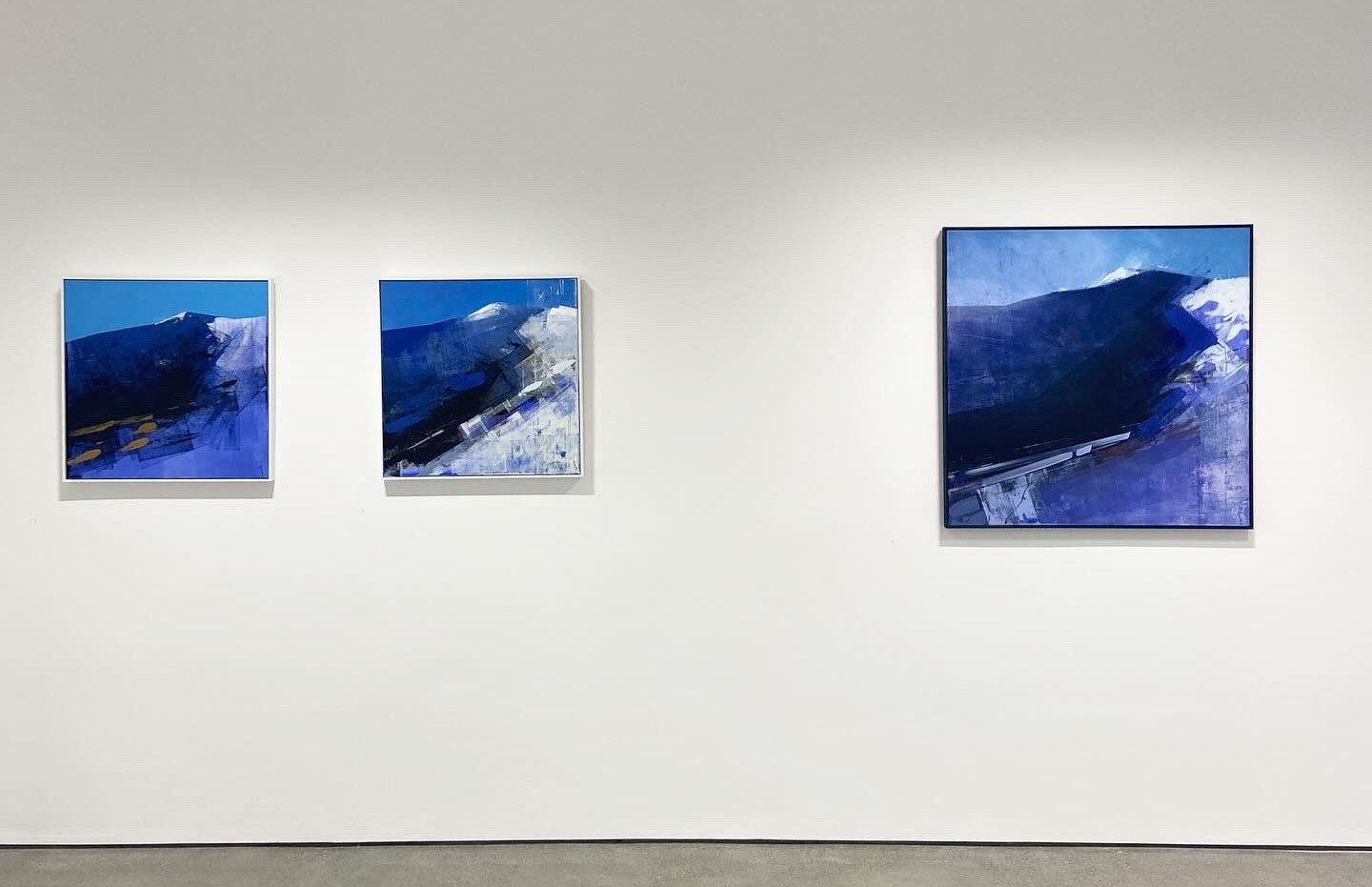Throughout Winter 2023 and Spring 2024 I was very busy! Busy out on the moors and the snow-lined mountains, busy in the studio with my giant canvasses and tubes of paint. Busy preparing, for a solo show at the brand new CELF gallery, Cardiff. Having worked with Myfanwy and Cerys for many years at Martin Tinney Gallery, I was thrilled to be invited to join this gallery when it opened last November. Celf represents a number of Wales’ foremost artists.
The show opened on the 18th of May - an evening full of sunshine and chatter,. I was so happy to meet Harry Holland, Kevin Sinnott and Carl Chapple, who not only are also Celf Gallery artists but artists whom I greatly admire.
This year marks 20 years since I graduated from university to live and work as a painter in Eryri. This exhibition explored the theme of ‘connection to place’. Over 20 new works comprised the exhibition; inspired by Yorkshire, Aberdeenshire and my home in Wales.
“My work always begins outside, working amongst the elements, often in places where humans have strived to thrive. When I am drawn to a particular place, I often find that generations of people have been drawn there also. For example; the hill which once held a fort, or a church built upon ancient grounds, a stone circle. All of these can represent ideas of connection, but with what? Our ancestors? Their human experience? Or is it an innate response to the physical aspects of that place? Perhaps it is both.
Since childhood, I have been in awe of Super 8 film. It’s dream-like qualities have for many years now informed my artistic voice – a sublime sun-flair at the edge of a memory.
I draw from these feelings when I get back to the studio, recalling through the filter of memory and sketchbook work.”























